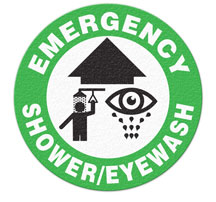| The Home page of ILPI's Safety Data Sheet (SDS) Resource, the leader in SDS information since 1995! | |
| The history and philosophy behind this resource. | |
| A curated collection of books and reference materials concerning Safety Data Sheets and closely related topics. | |
| Paste your plain text SDS into the SDS-Demystifier, and it will be converted into a hypertext-enriched document with links to detailed explanations of each key term. | |
| An extensive list of frequently asked questions about Safety Data Sheets including regulations, content, compliance, and more. | |
| A humorous take on Safety Data Sheet jargon. Fill in the blanks on our entry form to generate a personalized Unsafety Data Sheet to share with your coworkers. | |
| Since 1995, we've maintained this massive curated list of the best places to find Safety Data Sheets on the Internet. | |
| You are here! Way more than a glossary, this hypertext-enhanced resource covers hundreds of SDS-related terms and expert knowledge. Each entry includes both the SDS relevance and links to additional authoritative resources. | |
| Archived results of Safety Data Sheet related polls taken by some of our millions of site visitors | |
| The OSHA regulations behind SDS regulations, including the inspection guidelines and over 400 official interpretations letters under the Hazard Communication Standard | |
| Commercial suppliers of SDS authoring and management software as well as cloud compliance services. | |
| Commercial companies that will create SDS's for your specific needs as well as SDS translation companies. |

Safety signs, banners, and scoreboards? Get yours at Safety Emporium!

Ensure a safe workplace with antislip floor marking signs from Safety Emporium.
Definition
As a noun, the common definition of chemical is a substance that is produced or used in a process (reaction) involving changes to atoms or molecules. The term is sometimes defined more broadly as "a substance".
The OSHA definition of chemical under the Hazard Communication Standard 29 CFR 1910.1200 (which requires SDS's), "any substance, or mixture of substances" is quite broad. For example, steel coils which are cut and processed, castings which are subsequently ground or welded upon, bricks that are dry sawed or drilled, carbide blades which are sharpened, are all examples of products which contain chemicals which, if available for workplace exposure, are covered by the HCS.
As an adjective, "chemical" means "of or pertaining to chemistry". Chemistry is the study of matter and its transformations.
Additional Information
There is no "chemical-free" substance. Everything around us is a chemical - the air we breathe, the food we eat, and the planet we're standing on. After a number of bad experiences with various substances, society has grown to view anything referred to as a "chemical" with fear and suspicion. For every chemical compound that has caused societal, environmental or health issues (asbestos, DDT, thalidomide, chlorofluorocarbons), there are dozens of others which have caused no harm or provided us with great benefits (penicillin, Kevlar, Nylon).
When people (irrationally) fear a substance simply because "it is a chemical", we call it chemophobia. For example, if you ask someone who was not an organic chemist if they wanted 2-oxo-L-threo-hexono-1,4- lactone-2,3-enediol in their body, the answer will usually be an emphatic "No!" A better answer would be "That depends...what effects will that have on me and the environment?" In this case, the effect would be beneficial because 2-oxo-L-threo-hexono-1,4- lactone-2,3-enediol is simply the formal IUPAC name for Vitamin C.
All too often, people can't use the word "chemical" without putting the word toxic in front of it. However, it is important to keep in mind that the dose makes the poison. People have died from drinking sea water....in fact, people have even died from drinking pure water. Just because we can now detect chemicals at every-decreasing concentrations, does not mean that those few parts per billion of an "unnatural" substance will kill you (although that can be true, of course).
Likewise, it's important to realize that there are many chemicals we can't live without. You can probably name some obvious ones like water, salt, and amino acids, but keep in mind that most of you reading this article probably would not be alive at the moment without the products chemistry and chemicals have made possible - antibiotics, alloys, and electricity, for example.
"Natural" products are not necessarily any safer or less toxic than "synthetic" or "artificial" chemicals. Sewage is natural, but it's not very good for you. Conversely, cis-platin is not natural, but it cures cancer. For more on this, see the chemophobia links under Further Reading below.
As you ponder a new chemical in your life, find out the best scientific information about it that you can. Do not rely on just any random web site; look for authoritative resources by established governmental, academic, and public service agencies. If you encounter a new chemical at your job, read the SDS. And if you have no information about a new chemical, then it's right to treat it with suspicion until you know otherwise. It's a sad fact that only a few hundred of the tens of thousands of chemicals in commercial use today have been thoroughly evaluated for their effects on human health and the environment. Keep your exposure as low as reasonably achievable in all cases.
Chemical manufacturers in the US and other "developed" nations have come a long way in the past century. Thanks to stricter regulation as well as consumer pressure, chemical manufacturers are working on developing "green" chemistry that produces less (or no) waste, have reduced the amount of waste they discharge to the environment, and have found replacements for hazardous processes. While there are always a few rogue operations out there, the American Chemistry Council's Responsible Care program has proven quite effective. Of course, there is always room for improvement and citizens need to keep a watchful eye on companies that are more interested in a quick profit than a sustainable environment.

Safety Emporium has the solution to your laboratory needs with an extensive line of glassware.
Books Available
NOTE: We may collect a share of sales or other compensation from the links in the following list:
- "Prudent Practices in the Laboratory: Handling and Disposal of Chemicals, 2nd Ed", Hardcover, 360 pages, 2011. Estimated price: $99.95. Info and/or order.
- "Laboratory Waste Management: A Guidebook (ACS Professional Reference Book) 2nd Ed", Hardcover, 256 pages, 2012. Estimated price: $113.15. Info and/or order.
- "Destruction of Hazardous Chemicals in the Laboratory, 4th Ed", Hardcover, 880 pages, 2023. Estimated price: $162.54. Info and/or order.
- "Chemical Exposures: Low Levels and High Stakes", Hardcover, 464 pages, 1998. Estimated price: $126.85. Info and/or order.
- "Chemical Process Safety: Learning from Case Histories, 4th Ed", Hardcover, 506 pages, 2015. Estimated price: $102.36. Info and/or order.
- "Introduction to Green Chemistry, Third Ed", Hardcover, 624 pages, 2022. Estimated price: $356.47. Info and/or order.
- "Green Chemistry: An Inclusive Approach 1st Edition", Paperback, 1,058 pages, 2017. Estimated price: $15108. Info and/or order.
SDS Relevance
Safety Data Sheets are only required for hazardous chemicals. As noted above, the OSHA definition of "chemical" is much broader than the common definition. However, certain items are exempted from coverage under the Hazard Communication Standard, particularly items that are classified as articles.
Recognize that virtually any chemical (substance) has inherent hazards that can cause harm under the right conditions. Water can drown you, pure oxygen can cause deadly fires, and consuming an entire bottle of whiskey in one minute will cause fatal poisoning.
The key is to know the potential hazards and precautions of each substance you deal with in the workplace. Read and understand the content of your SDS's. If you are unsure of the hazards (and what you can do to avoid them) after reading the SDS do not proceed until someone has fully explained these to you. Always use engineering controls and proper PPE to reduce workplace exposures.
Always remember that the best way to avoid exposure to toxic or hazardous substances is to eliminate them from your workplace. Look for alternative methods to using such materials and processes.

Filter mixtures at constant temperature with laboratory frits and filters from Safety Emporium.
Further Reading
- Chemistry Is Everywhere at the American Chemical Society.
- Getting Real About Chemical Risks at the American Chemical Society discusses the science and limitations of chemical risk/hazard assessment.
- The U.S. EPA maintains a list of Chemical Accident Prevention Publications.
- The US CDC's, National Report on Human Exposure to Environmental Chemicals discusses Americans' exposure to environmental chemicals.
- Chemophobia - the irrational fear of chemicals by Bob LaPointe.
- Green Chemistry at the US EPA.
- CH105: Consumer Chemistry - How Organic Chemistry Impacts our Lives, a course at Western Oregon U.
- Consumer Products at the Royal Society of Chemistry.
- Glossary of Chemical Terms at Hach.
- GEMS - Green Education Materials for Chemists provided educational resources for teachers at all levels, but is no longer available, available through the Internet Archive.
See also: chemical formula, concentration, EPCRA, mole, RTECS, SARA, TSCA, What Happens When You Don't Follow Safety Rules.
